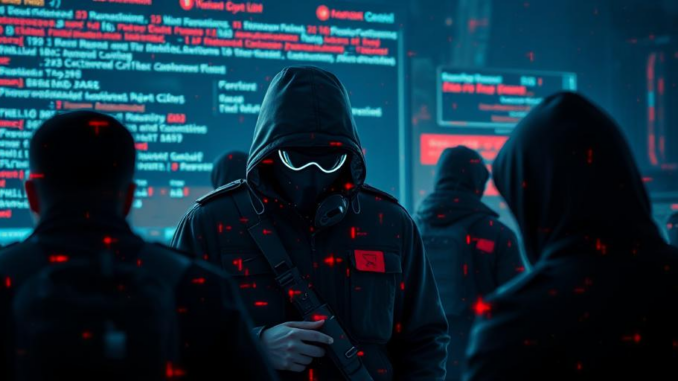
Summary
A ransomware attack on Casio in October 2024 exposed the data of 8,500 people, mainly employees. The Underground ransomware gang claimed responsibility but Casio refused to pay the ransom. The company is recovering from the attack but it highlights the vulnerability of large organizations to cyberattacks.
Explore the data solution with built-in protection against ransomware TrueNAS.
** Main Story**
Okay, so, you probably heard about the Casio ransomware attack last October, right? It’s a pretty big deal, and honestly, it’s something we all need to be paying attention to. I mean, if it can happen to a giant like Casio, it can happen to anyone, really.
On October 5th, 2024, Casio – yeah, the folks who make those awesome calculators and watches – got hit hard. This Underground ransomware gang, these guys, they really went for it. There were disruptions all over the place, data got leaked. The whole thing just highlights how vulnerable even big companies can be to cybersecurity threats.
The Nitty-Gritty of the Attack
These attackers, they weren’t exactly subtle. They used phishing – you know, those dodgy emails that try to trick you into clicking on a link – to sneak into Casio’s network. And once they were in? They basically crippled the IT systems, causing chaos. The Underground gang wasted no time taking credit, bragging about stealing a massive 204.9 GB of data. Can you imagine? That’s everything from confidential documents to financial records and even sensitive employee info. And, of course, they demanded a ransom, threatening to spill the beans if Casio didn’t pay up.
But here’s where it gets interesting: Casio refused to play ball. Smart move, in my opinion. They didn’t negotiate. Instead, they called in the pros – law enforcement, lawyers, cybersecurity experts. And, naturally, they focused on damage control and getting everything back online. The good news, at least, is they assured everyone that customer financial data and credit card info was safe and sound. I did hear that some employees got those phishing emails – the same ones used in the attack, but, as far as I know, no one else – partners, customers, etc., got hit by it in any real way.
What Data Was Actually Exposed?
The investigation did reveal that some personal information was compromised. Apparently, about 8,500 people were affected, including employees, business partners, and a few customers.
- Employee Data: Sadly, the data of 6,456 employees got exposed. We’re talking names, emails, taxpayer IDs, family details… even internal system account stuff. Pretty sensitive.
- Business Partner Data: It also looks like 1,931 business partners weren’t safe either. Their names, phone numbers, company info, and, in some instances, ID card information were compromised.
- Customer Data: Most customers’ data remained secure, which is a relief. However, a small group of 91 customers had their delivery addresses, names, phone numbers, purchase dates, and the product names that they had bought leaked. That’s still not good, though.
Casio’s Response: Playing it Smart
Casio’s response was actually pretty impressive. They didn’t panic. They shut down the affected servers and brought in outside security experts to investigate the damage. They also contacted the authorities and started working to restore their systems. I mean, what else can you do? While most of their systems are up and running again, a few are still being fixed. One lessson to be taken from this, is that their popular platforms, CASIO ID and ClassPad.net, weren’t affected at all which is great.
The Bigger Picture: Lessons Learned
This whole thing is a wake-up call. It shows how vulnerable we all are to cyberattacks. If you ask me, it really drives home the need for strong cybersecurity measures. And employee training is a must – people need to know how to spot a phishing email. But even more importantly, we need to have a solid plan in place for when, not if, something like this happens. And for Casio? Their refusal to pay the ransom sends a clear message – we won’t encourage these criminals. It’s all about data security and not giving in to extortion. Today, Casio continues to work on recovering, strengthening their cybersecurity, and supporting those affected by the breach. You gotta admire their tenacity, right? Ultimately, it’s all about staying vigilant and learning from these incidents. After all, it’s our responsibility to safeguard data in this ever-evolving digital landscape, isn’t it?


Casio’s refusal to pay the ransom sets an important precedent. Do you think more companies will follow suit, despite the potential risks of data exposure? A united front might deter future attacks, but the immediate consequences could be severe.
That’s a great point! The potential for a ‘united front’ against ransomware is compelling. It will be interesting to see if more companies choose this path, weighing the risks of data exposure against the long-term benefits of discouraging future attacks. It’s a complex decision with significant implications!
Editor: StorageTech.News
Thank you to our Sponsor Esdebe
Casio’s multi-pronged response, involving law enforcement and cybersecurity experts, highlights the importance of a comprehensive incident response plan. Beyond technical recovery, how crucial is the communication strategy with affected employees and partners in maintaining trust and mitigating reputational damage following such an attack?